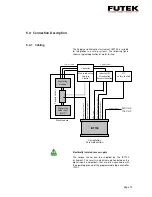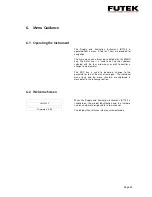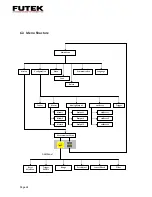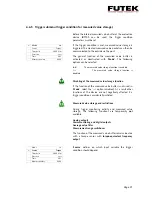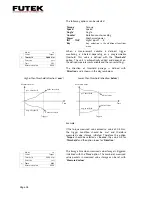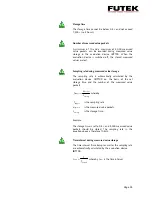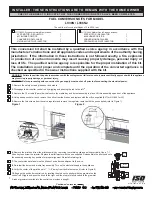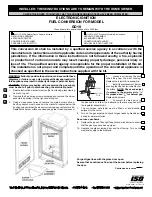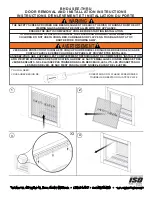
N\kk‘e^ \oXdgc\7
=Zk‘m\ [lXc*iXe^\ j\ejfi
n‘k_ mfckX^\ flkglk
0lm f^Zl- kZg‘^9
1// L
×
f+
±
0/-//3 T
1g] f^Zl- kZg‘^9 1/ L
×
f+
±
8-886 T
N\kk‘e^ \oXdgc\7
KXjj‘m\ j\ejfi
K^Zlnk^f^gm kZg‘^9
1// L
×
f
Q^glbmbobmr9
±
0 fT.T
4
N‘^e+F‘e[
>i‘[^\
Sgbm
L{f
PZg‘^
1//-/ L{f
Q^gl-
0-/// fT.T
B^\- Nm-
###-###
4
N‘^e+F‘e[
(,*.-Q
Sgbm
Lf
0- PZg‘^
1//-/ Lf
LhfbgZe
0/-//3T
B^\- Nm-
####-##
1- PZg‘^
1/ Lf
LhfbgZe
8-886T
B^\- Nm-
###-###
Q^e^\mbhg
@nmmhg
Mnminm
,,,
If the ’
Bridge
’ measurement type is activated, the
sensitivity of the strain gage bridge of a passive sensor
appears behind the abbreviation ’
Sens.
’.
In conjunction with the selected ’
Range
’, the conversion
of mV/V into the selected ’
Unit
’ of the sensor is carried
out automatically.
The number or decimal places after the decimal point for
displaying the torque or force signal can be defined in
’
Dec.Pt.
’. A definition of ’
##.####
’, for example, means
that 4 decimal points are displayed for the respective
display range.
An active sensor with normalized torque-equivalent
voltage output is selected with ’
+/-10V
’. In this case, the
’
Nominal
’ abbreviation appears for the 1st and 2nd
measurement range (’
1.Range
’ and
’2.Range
’).
This means sensors with an output voltage of 0 …
±
10V
can be connected.
Page 27
Summary of Contents for IBT100
Page 112: ...Page 112...



